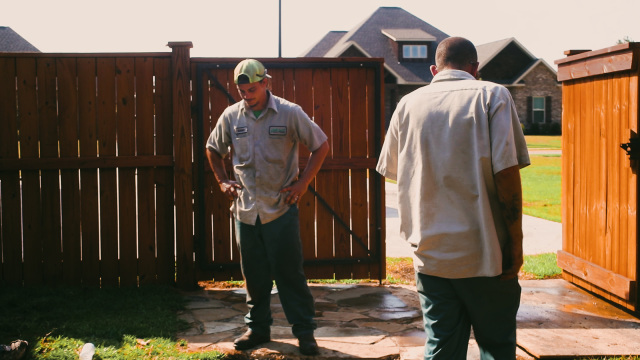- Editing Assets
- >
- Video Assets
- >
- LUTs
- >
- Pumpkin Spice LUT
Pumpkin Spice LUT
SKU:
LPK0005
$9.99
$9.99
Unavailable
per item
This LUT was designed by us based on grades we use in some of our projects! The Pumpkin Spice LUT gives your footage a warm, vintage cinema feel. It enhances warmer colors, especially oranges, which is why we named it Pumpkin Spice.
There are five variants of the Pumpkin Spice LUT included with your download. One is a Rec 709 variant for use with footage filmed with standard color space settings. The other variants are for Log color spaces and include a Canon C-log variant, DJI D-log variant, GoPro Protune variant, and a generic log variant to use with most any Log color space. For more info about Rec 709 and Log color spaces, as well as the LUT variants, see the FAQ at the bottom of this page.
Before and After
FAQ
What are Rec 709 and Log color Spaces?
We won't go into a color science lecture here, but to put it simply, a color space tells the camera how to process colors. Rec 709 is the standard color space for HDTV. While different cameras all process color with some degree of variation, the default color space is usually Rec 709 or something similar. In your camera's settings, you may see sRGB rather than Rec 709. The sRGB color space is identical to Rec 709.
A Log color space is a feature mainly found in cinema cameras and high-end DSLRs. Log color spaces produce very flat colors. This means the footage requires more color correction in post-production, but also gives you more room to work with the color and look of the footage. With color correction, you can get more dynamic range out of Log footage. Different manufacturers have their own Log color spaces, for example, Canon's C-Log, DJI's D-Log, GoPro's Protune "flat" setting, etc. Again, not all cameras have a Log color space option. Using a Log color space is only recommended if you are planning on color correcting your footage and know how to do so. If you've never worked with Log footage before, it's best to practice color correcting it before using filming an actual production in Log.
A Log color space is a feature mainly found in cinema cameras and high-end DSLRs. Log color spaces produce very flat colors. This means the footage requires more color correction in post-production, but also gives you more room to work with the color and look of the footage. With color correction, you can get more dynamic range out of Log footage. Different manufacturers have their own Log color spaces, for example, Canon's C-Log, DJI's D-Log, GoPro's Protune "flat" setting, etc. Again, not all cameras have a Log color space option. Using a Log color space is only recommended if you are planning on color correcting your footage and know how to do so. If you've never worked with Log footage before, it's best to practice color correcting it before using filming an actual production in Log.
Which LUT variant should I use?
That depends on which color space you are shooting your footage in. If you're new to video production and aren't sure, then it's probably Rec 709 if you haven't changed the color space in your camera. For this you would use the Rec 709 variant. It mainly just applies a grade to your footage, since Rec 709 footage doesn't require extra correction like Log footage does.
If your footage looks really flat and desaturated straight out of camera though, it may be set to a Log color space. Check online or reference your camera's user manual to see if your camera is able to film in Log, and if it is, then search for how to find the color space settings. There you'll be able to see what color space the camera is set to.
If you know you are filming in a Log color space, then you can use one of the Log variants to both correct and grade your footage all with one LUT. If you are filming in Canon's C-Log, DJI's D-Log, or GoPro's Protune "flat" color space, you can use the variant that corresponds to these particular color spaces. If you are filming in a different Log color space, the generic Log variant will give you a good Log base correction with most any Log color space. If you are filming in Log, but doing your correction manually, use the Rec 709 variant to apply just the grade after you finish your corrections.
NOTE: All shots are different, and therefore you shouldn't just drop LUTs on your footage and move on. Whether you're using our LUTs or anyone else's, always tweak the look to fit your footage. It may need to be dialed back or turned up, it just depends on the shot and the visual you are trying to create!
If your footage looks really flat and desaturated straight out of camera though, it may be set to a Log color space. Check online or reference your camera's user manual to see if your camera is able to film in Log, and if it is, then search for how to find the color space settings. There you'll be able to see what color space the camera is set to.
If you know you are filming in a Log color space, then you can use one of the Log variants to both correct and grade your footage all with one LUT. If you are filming in Canon's C-Log, DJI's D-Log, or GoPro's Protune "flat" color space, you can use the variant that corresponds to these particular color spaces. If you are filming in a different Log color space, the generic Log variant will give you a good Log base correction with most any Log color space. If you are filming in Log, but doing your correction manually, use the Rec 709 variant to apply just the grade after you finish your corrections.
NOTE: All shots are different, and therefore you shouldn't just drop LUTs on your footage and move on. Whether you're using our LUTs or anyone else's, always tweak the look to fit your footage. It may need to be dialed back or turned up, it just depends on the shot and the visual you are trying to create!
How do I use LUTs?
Different video editing programs have different ways of applying LUTs. If you are unsure of how to apply a LUT in your video editing software, consult the user guide, or search for tutorials of how to apply LUTs in your program of choice.
Do I have to Credit ShadowCast Studios if I use this LUT in a Production?
Nope! No crediting required unless you want to. Once you purchase and download it, you can use the LUT in any production, both commercial and/or not-for-profit. The only thing you can't do is resell the actual LUTs or give them away without contacting us and working out a agreement first.













